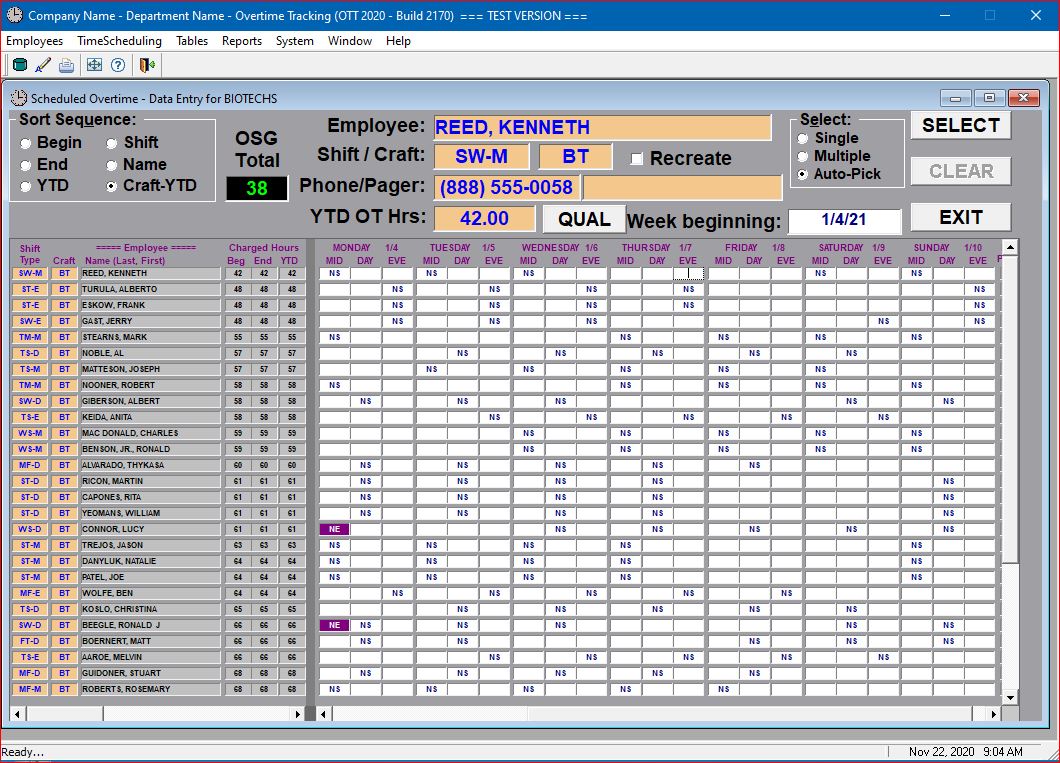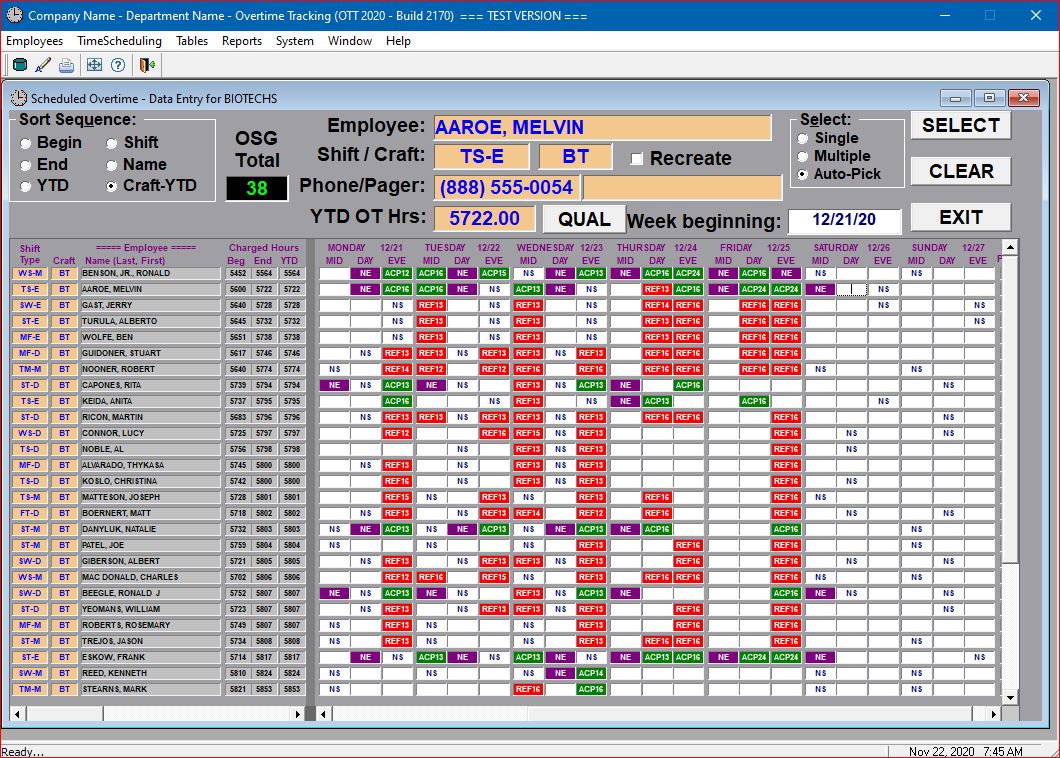
First, it's important to understand the numbers displayed on the Overtime Scheduling screen for each week:
The Charged Hours column Beg displays the "begin week" charged hours for each employee and will typically change from week to week and are stored in the database along with the information for each individual week.
The Charged Hours column End displays the "end week" charged hours for each employee and will typically change from week to week and are stored in the database along with the information for each individual week.
The Charged Hours column YTD displays the "year-to-date" charged hours for each employee and will always be the same from week to week (at any given point in time) and are stored in the database along with the information for each employee.
As per union contract, all employees charged hours are RESET back to ZERO at the end of each calendar year. This process requires "exception processing" during the transition from one calendar year to the next.
When the system generates the FIRST week that contains days that are in the next calendar year, all employee "year-to-date" charged hours are automatically reset to 0.00. The following screen depicts the last "full week" in the calendar year of the year 2020:

Note that for most every employee their "begin week" hours are different than their "end week" hours. Since the following week of 12/28/2020 has NOT been generated yet (the week that "spans" into the next calendar year), each employees "end week" hours are exactly the same as their "year-to-date" hours.
Also, note that the "Sort Sequence" being used for scheduling overtime is "Craft-YTD" (could also be "YTD") since these are the hours that are pertinent in scheduling overtime for most weeks of any calendar year!
The following screen depicts an earlier week in the current calendar year of 2020 (specifically the week of February 3rd, 2020):
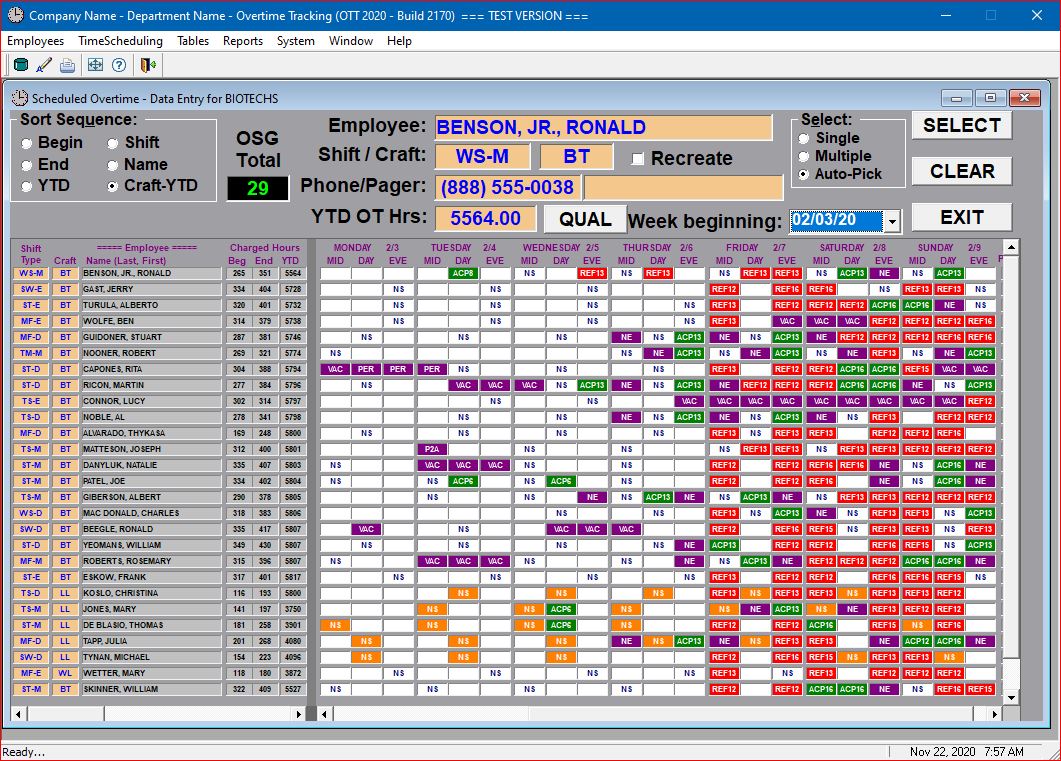
Note that the "begin week" and "end week" hours are noticeably lower since they are the actual hours that had been charged as of the calendar week of February 3rd of 2020. The "year-to-date" hours, however, are exactly the same as in the first screen since these hours ALWAYS reflect the current "year-to-date" hours, stored separately with each employee's personnel information.
The following screen displays the calendar week starting with 12/28, which includes 12/28/20, 12/29/20, 12/30/20, 12/31/20, 01/01/21, 01/02/21, and 01/03/21. So this is the week that "spans" calendar years, which causes the system to automatically RESET the YTD charged hours back to ZERO (0.00):
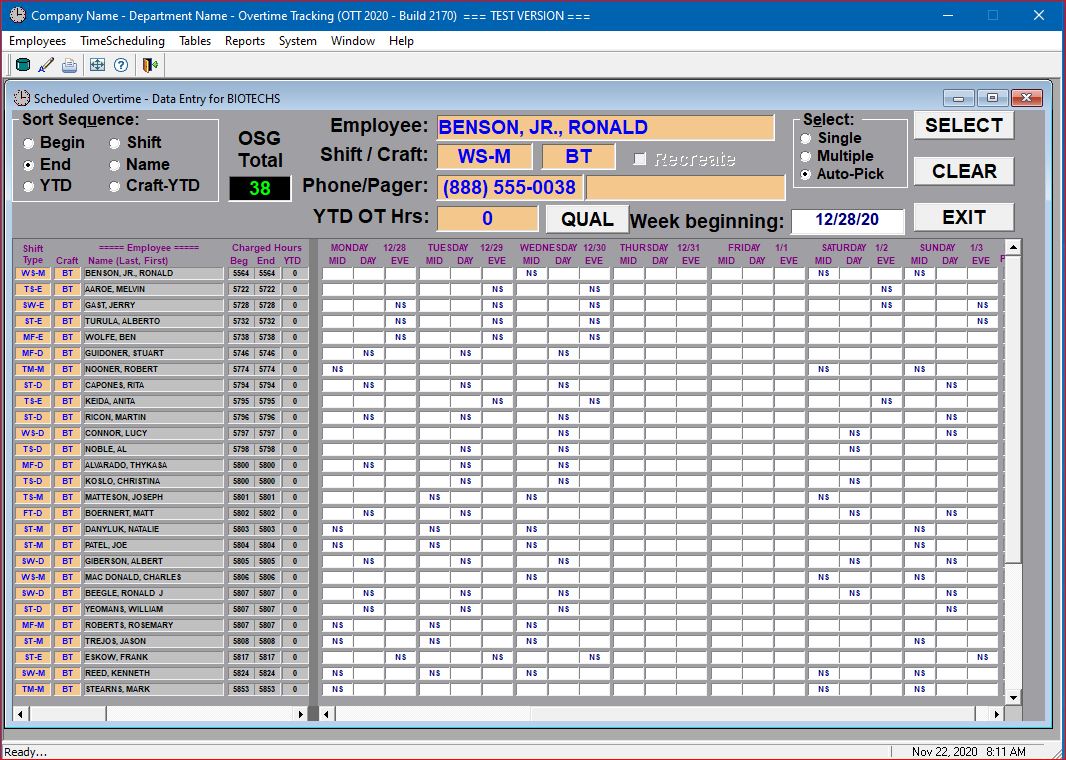
Note that the "Sort Sequence" has been changed to "End" in order to maintain the employees in "low-hour" order for any overtime assignments entered for any day in the calendar year 2020. The "YTD" (or "Craft-YTD") sort, at this point, displays employees in seniority order since they all have the same number of hours (0.00).
Any overtime assignments for calendar year 2021 (Friday thru Sunday in the screen above) would have to use one of the "year-to-date" sort sequences to correctly assign any overtime for calendar year 2021.
The following screen displays overtime entered for calendar year 2020 (Monday thru Thursday):
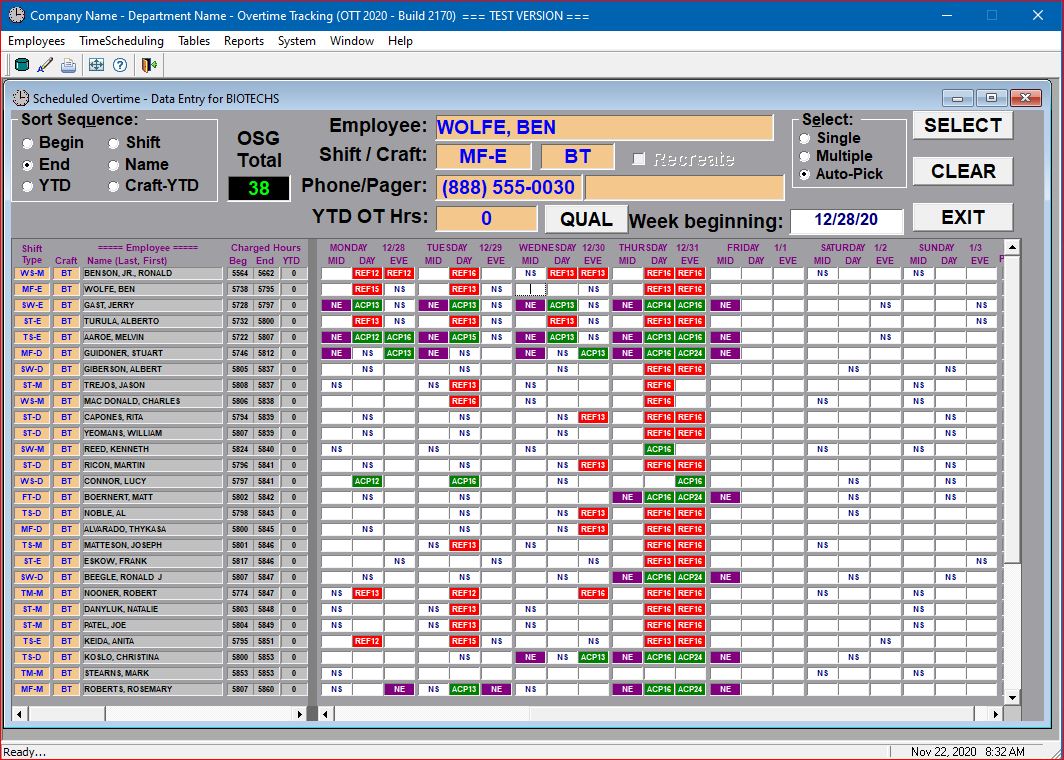
Note that ALL charges were added to each employee's "end-hours" and, with the "Sort Sequence" set to "End", the employee's are all displayed and all charges applied by "low-hours" for the calendar year of 2020.
The following screens display overtime entered for calendar year 2021 (Friday thru Sunday):

Note that BEFORE assigning any overtime in the new calendar year, you MUST change the "Sort Selection" to one of the "year-to-date" options to ensure that employees are selected in the proper order (compare the 2 screens above to see that the employees are now in "seniority" order, rather than "low-hour" order for 2020). The next screen contains the 2021 charges:
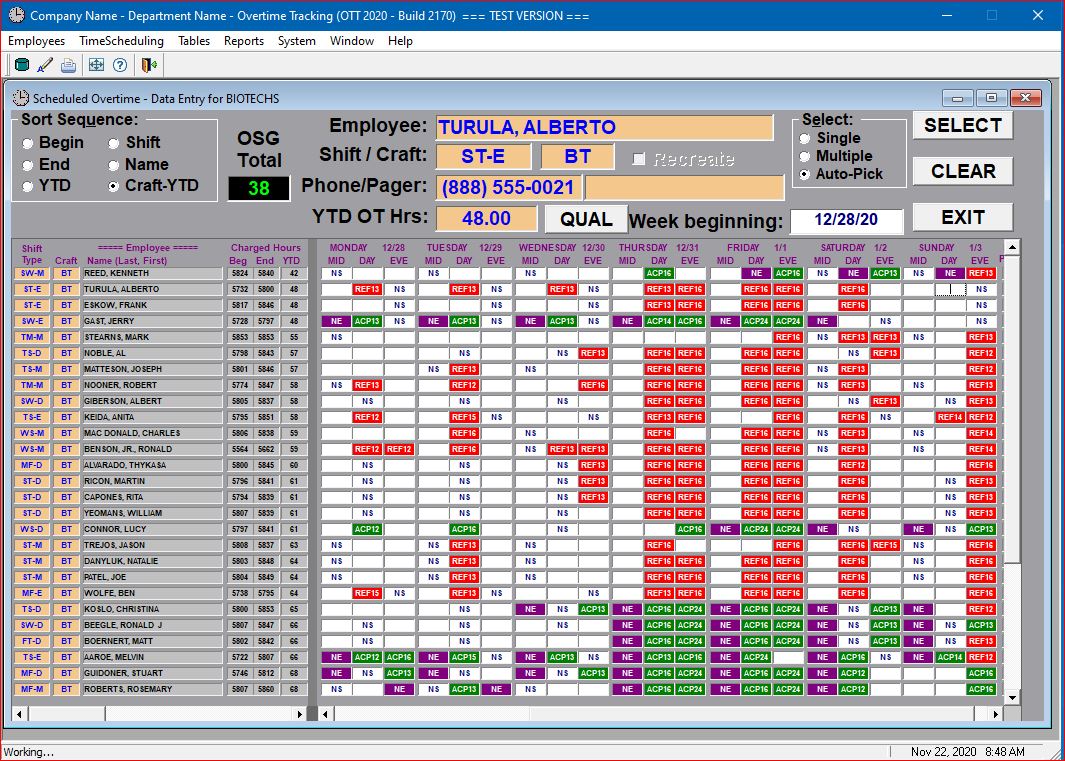
Note that ALL the overtime assignments for calendar year 2021 are added ONLY to the "YTD" charged hours and NOT to the "End" hours (as they would be in a typical week). Employees are now sorted in "low-hour" order with "seniority" as the "tie-breaker".
Finally, when the week of 1/4/2021 is generated, the "begin hours" and the "end hours" are now reflecting only the hours charged for calendar week 2021:
